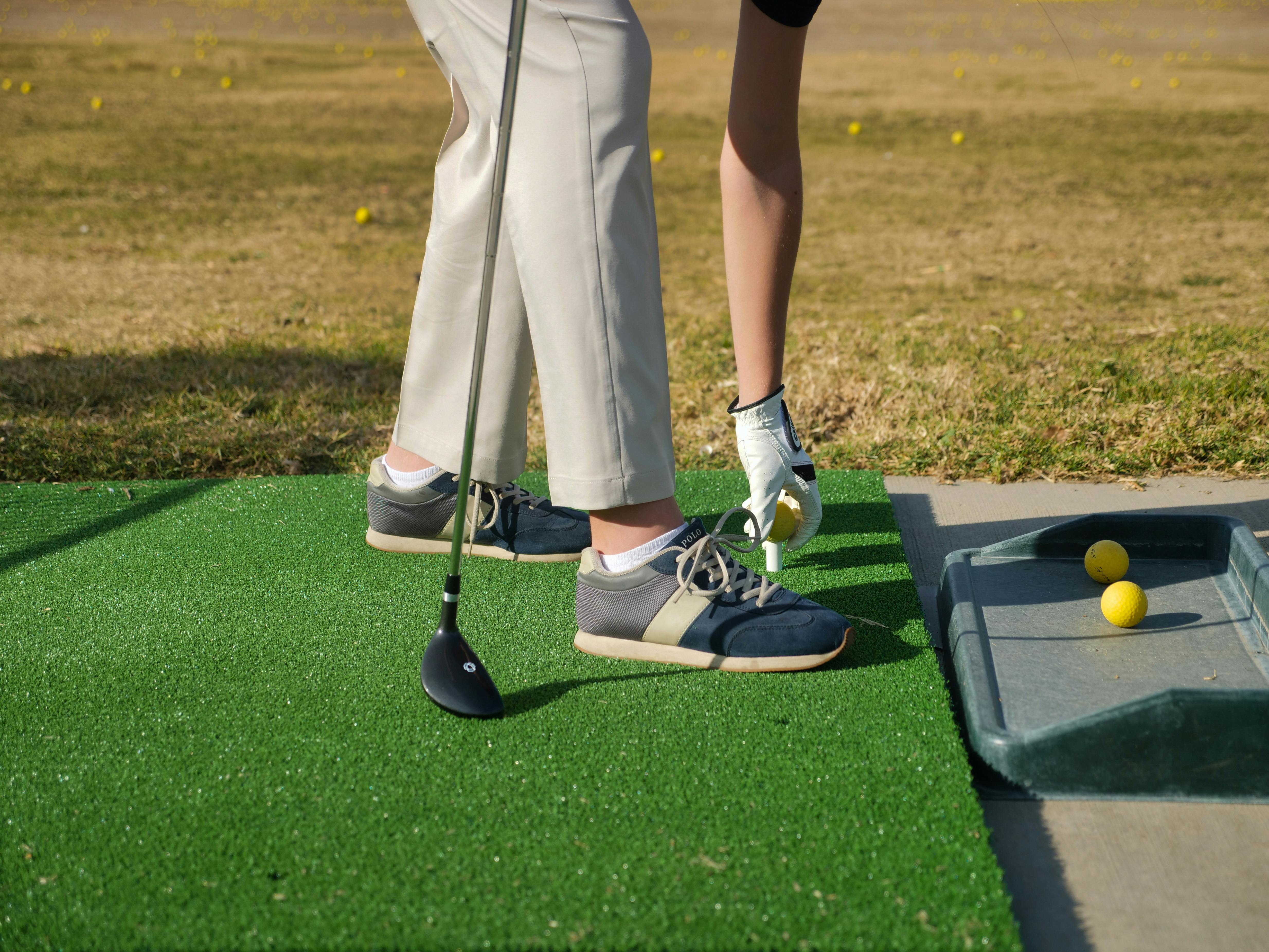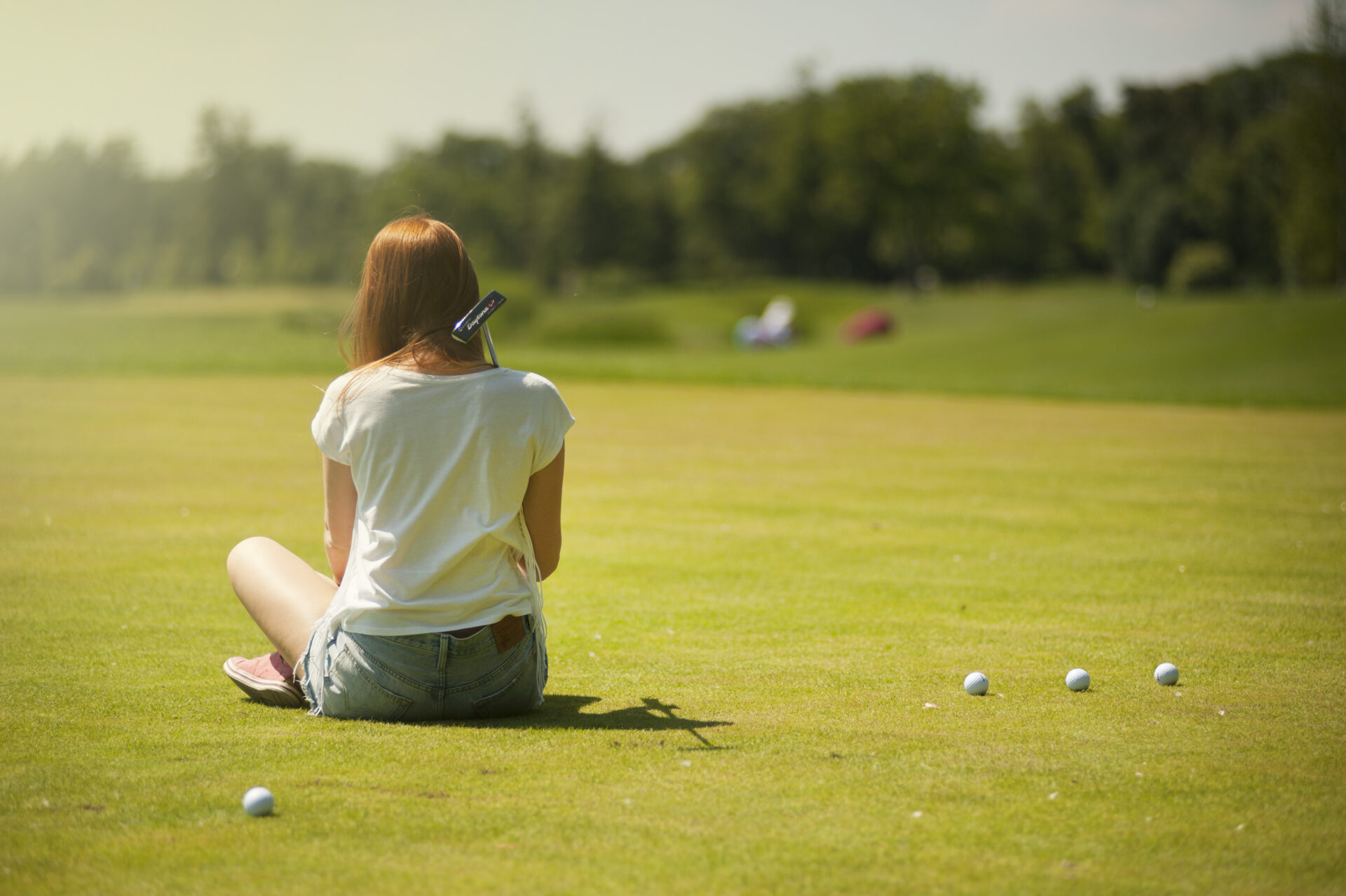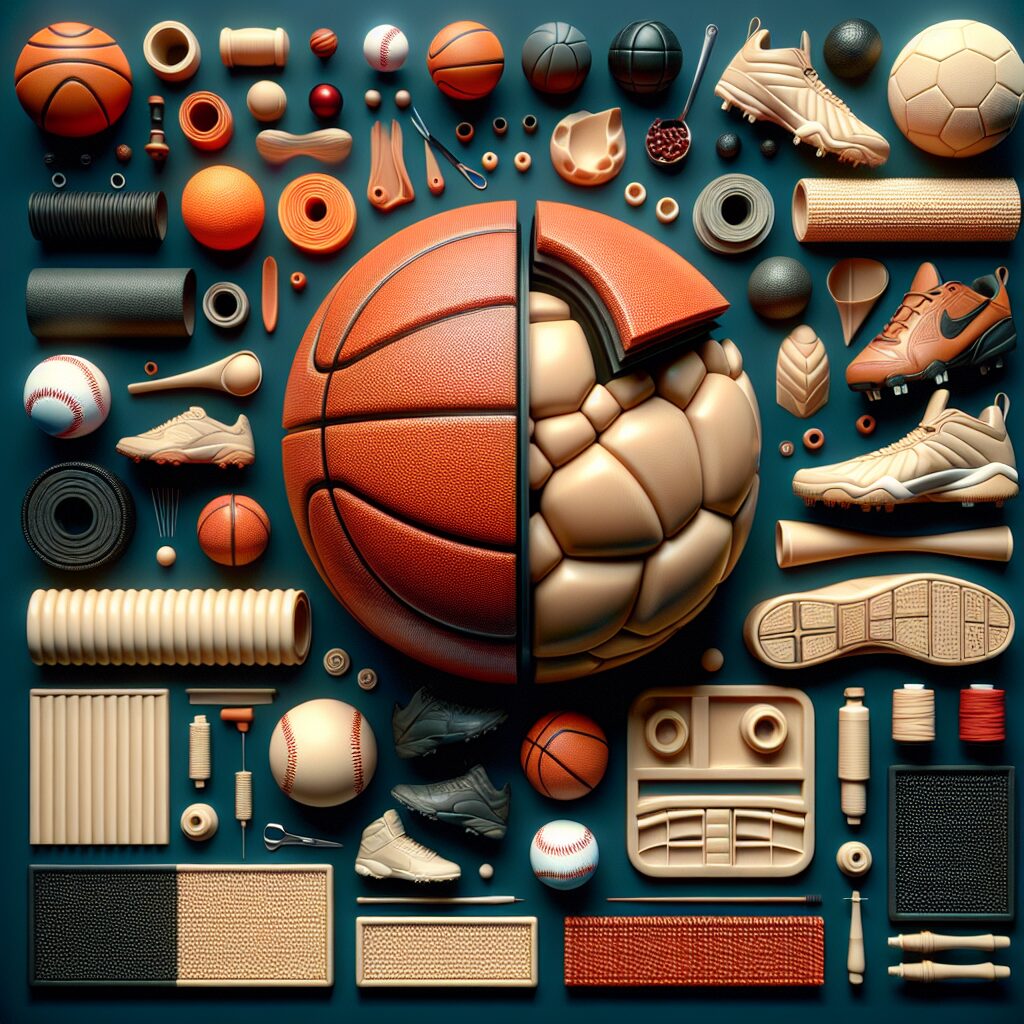Golf is a sport enjoyed by millions of people around the world, and it all starts with the golf ball. A golf ball is a small, hard ball designed to be hit by a golf club. It is made up of several layers of materials that work together to provide the best performance for the golfer. In this article, we’ll explore what’s in golf balls and how they are designed for optimal performance.A golf ball is typically composed of a core, a mantle, and a cover. The core is usually made of a hard rubber or synthetic material and is the heaviest part of the ball. It provides most of the ball’s compression and gives it its spin. The mantle layer is made of a soft rubber or synthetic material and helps to slow down the speed of the core as it spins. Finally, the cover layer is usually made of urethane or Surlyn which provides the golf ball with its durability and water resistance.
Golf Ball Components
Golf balls are made up of several different components. The core of the golf ball is typically made up of a rubber compound and the cover is made from a synthetic material such as Surlyn or urethane. The dimples on the surface of the ball help to reduce air resistance and keep it in motion for longer. The components of a golf ball have an important role in influencing how it behaves when it is hit, and ultimately how far it will travel.
Benefits of Golf Ball Components
The core of the golf ball has an impact on several important aspects, such as spin rate, velocity and accuracy. A softer core will generally provide more spin to the ball, while a harder core can provide greater distance due to higher velocity when hit. The cover helps protect the core from damage, as well as providing additional spin when needed. The dimples on the surface create turbulence which helps reduce air resistance and ultimately increases accuracy and distance for each shot.
Overall, understanding how different components affect performance can help players make more informed decisions about which type of golf ball they should use for their game. It is also important to note that some components may wear down over time so regular replacement may be necessary to maintain optimum performance levels.
Types of Golf Ball Cores
Golf ball cores are the innermost layer of a golf ball, and they provide many of the ball’s performance characteristics. The type of core used in a golf ball will determine its compression, spin rate, and feel. There are three primary types of golf ball cores: solid, dual-layer, and multi-layer.
A solid core is the traditional type of core used in most golf balls. It consists of one single rubber material that is highly compressed to give the ball its shape and size. Solid cores provide optimal durability but can be difficult for beginners to control due to their low spin rates.
Dual-layer cores are composed of two layers: an inner core layer and an outer mantle layer. The inner core layer is made from a soft material that provides increased spin and distance when struck with a club head. The outer mantle layer is made from a firmer material that helps to reduce spin off the tee while providing more control for shots around the green.
Multi-layer cores are composed of multiple layers which usually include an inner core layer, an outer mantle layer, and several intermediate layers in between. They offer maximum performance by combining the benefits of both solid and dual-layer cores while providing enhanced spin control around the green as well as increased distance off the tee.
Surlyn and Urethane Covers
Golf ball covers are an essential part of the golf ball, providing protection and adding to the performance of the ball. There are two main types of covers used in golf balls today: Surlyn and urethane. Surlyn is a polyurethane-based material that provides great durability and prevents scuffing and wear on the cover. Urethane is a softer material that provides more spin off the clubface, allowing for greater control of shots around the green. Both materials have their advantages and disadvantages, so it’s important to consider both when choosing a golf ball.
Surlyn covers offer superior durability, which can be beneficial for players who play on hard courses or those who want to keep their golf balls in top condition for longer periods of time. This type of cover also has a higher compression rating that helps reduce spin off driver shots, making it ideal for players who want to maximize their distance off tee shots. On the downside, Surlyn covers don’t provide as much spin around the greens as urethane covers do, so they may not be suitable for players who need more control in their short game.
Urethane covers provide more spin around the greens than Surlyn covers, making them an attractive option for players looking for more control in their short game. Urethane offers less durability than Surlyn though, so players should consider how often they play when deciding which cover to choose. Additionally, urethane has lower compression ratings than Surlyn, which can result in less distance off tee shots compared to balls with a Surlyn cover.
Overall, there are benefits to both types of cover materials when it comes to golf ball performance. Players should consider their own game and playing conditions when deciding between a Surlyn or urethane covered golf ball in order to find the best fit for their needs.
Compression and Its Impact on Feel
Compression is an important factor to consider when selecting a golf ball. The compression of a golf ball affects the feel, control, and distance you can achieve. The compression of a golf ball is measured in pounds per square inch (psi). A higher compression golf ball will feel harder than a lower compression golf ball. It will also provide more control and distance. A lower compression golf ball will feel softer and may not provide as much control or distance as a higher compression golf ball.
When selecting a golf ball, it is important to consider the compression rating that best suits your game. Players with faster swing speeds tend to prefer higher compression balls because they provide more control and distance. Players with slower swing speeds generally prefer lower compression balls since they are easier to compress and provide more spin for increased accuracy.
The feel of the golf ball is also affected by its construction materials. Golf balls are typically made of either urethane or Surlyn material. Urethane balls tend to offer more spin on shots while providing better control around the greens compared to Surlyn-covered balls. On the other hand, Surlyn-covered balls generally offer less spin but fly farther due to their harder cover material.
Compression and construction materials both play an important role in determining the feel of a golf ball. It is important to consider both factors when selecting a golf ball that best suits your game.

Construction of Multi-Piece Golf Balls
Golf balls are an important part of the game of golf, and the construction of these balls is a complex process. Multi-piece golf balls are constructed from two or more components, and each component has its own unique properties that contribute to the overall performance of the ball. The first component is the core, which is usually made from a rubber or plastic material and provides the ball with its compression and bounce characteristics. The second component is the cover, which can be made from a variety of materials such as urethane or Surlyn. The cover provides the ball with its spin characteristics as well as protection from wear and tear. Finally, a dimple pattern is applied to both sides of the ball to reduce air resistance and promote a longer flight distance.
The process for constructing multi-piece golf balls involves several steps. First, each component is molded into shape using specialized equipment. This includes forming the core into a sphere shape, cutting out shapes for major dimples on both sides of the core, and forming various grooves on one side to create additional spin control when hit off-center. The cover must also be molded into shape before being added to the core. Once all components are molded into shape they are brought together in an assembly line where they are securely adhered together using specialized bonding agents. After this process has been completed, any additional dimples can be applied by hand using a special tooling machine before finally being packaged for sale.
Overall, multi-piece golf balls are constructed through an intricate process that involves several steps in order to ensure optimal performance when hit off different surfaces during play. Through careful crafting and attention to detail, manufacturers can create golf balls that provide players with superior performance characteristics that can help them achieve their goals on the golf course.
Wind Resistance and Dimple Design
Golf ball dimple design has a great impact on the balls flight path and overall performance. Dimples create turbulence in the air flow around the golf ball, which greatly reduces the amount of wind resistance that affects it. This turbulence helps reduce drag and increase lift, allowing the ball to fly farther and straighter. It also helps reduce spin, improving accuracy and distance. The dimples also help create a lift force that counteracts gravity, allowing the ball to stay airborne for a longer period of time.
The number of dimples on a golf ball varies from manufacturer to manufacturer, but typically range from 300 to 500. The depth of each dimple also varies, with some being deeper than others depending on how they are designed. There is no scientific consensus on what type of dimple pattern is best for aerodynamics or distance; however, many experienced players believe that deeper dimples with larger sizes are more beneficial for distance as they promote greater lift and less drag. Additionally, having an even distribution of dimples can help create more consistent flight paths.
Overall, golf ball dimple design plays an important role in maximizing distance and accuracy when hitting a golf ball. The right combination of dimple size, depth, pattern, and number can have a significant impact on the performance of your golf game.
The Role of Spin in Golf Balls
Golf balls are designed to spin, and the amount of spin a golf ball has can significantly affect a golfer’s game. Spin is the rotation of the golf ball as it travels through the air, and it can be used to control the direction and trajectory of a shot. The amount of spin a golf ball has is determined by several factors, including its construction, aerodynamics, and surface texture.
Golf balls are constructed with a dimple pattern on their outer layer that helps them fly through the air with more lift and less drag. This dimpled pattern also helps create backspin when hit off the tee or from short range. Backspin causes the golf ball to travel higher in the air and then quickly drop towards its target. The more backspin there is on a golf ball, the more control a golfer has over their shots.
The aerodynamics of a golf ball also plays an important role in its spin rate. Aerodynamics refers to how well air flows around an object, and this affects how fast or slow it spins through the air. Golf balls with dimples on their surface have better aerodynamics than those without because they are designed to fly farther with less drag. Additionally, some golf balls are designed with special “dimple patterns” that help them spin faster or slower depending on what type of shot a golfer is trying to make.
Finally, surface texture is another factor that affects spin rate. Golf balls can have either smooth or rough surfaces depending on what type of shot they are meant for and what type of terrain they are being used on. Smooth surfaces will allow for longer drives as there will be less friction between the clubface and the ball, while rough surfaces will cause more friction which will result in more spin when hitting off short range shots or out of bunkers.
In conclusion, understanding how spin works in golf can help improve your game dramatically. By taking into account factors such as construction, aerodynamics, and surface texture you can choose the right type of golf ball for any situation and maximize your control over your shots. With enough practice you’ll be able to use spin to help you hit longer drives off the tee or get yourself out of tricky situations around the green!

Conclusion
Golf balls are incredibly complex pieces of equipment, and their construction reflects this complexity. Each layer of the ball is made up of hundreds of thousands of tiny fibers, and the core is made from a highly elastic rubber compound. The cover is usually made from urethane or Surlyn, and this helps to reduce spin on the ball and give it its unique shape. The dimples on the surface of the ball help to reduce aerodynamic drag and give it greater distance.
The components that make up a golf ball vary depending on its intended purpose, with some balls designed for high spin rates, while others are designed for maximum distance. Ultimately, the choice of golf ball will depend on your individual needs as a golfer, so it’s important to do some research before buying.
In summary, golf balls are incredibly complex pieces of equipment that can drastically affect your game. Knowing what’s inside a golf ball will help you understand how they perform differently and choose the right one for you.




